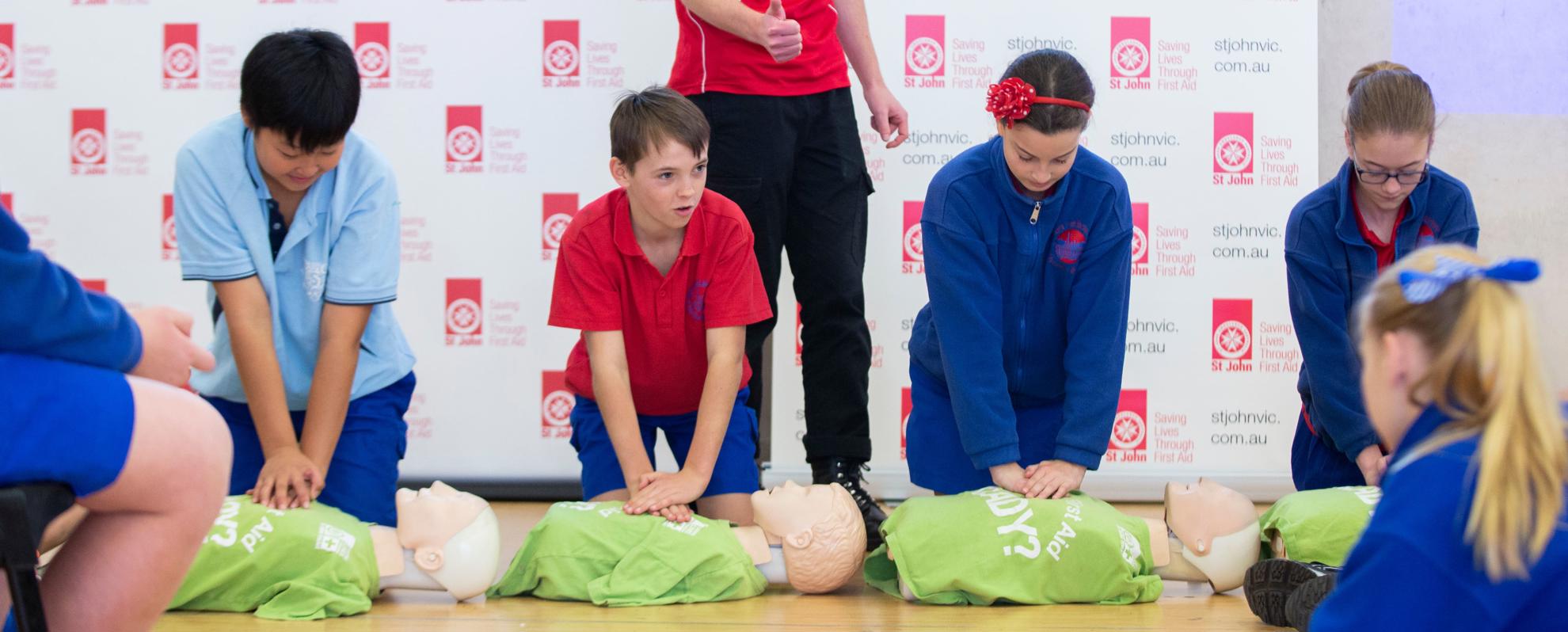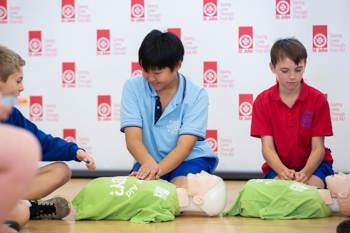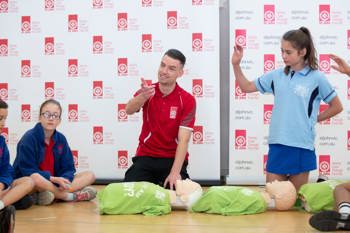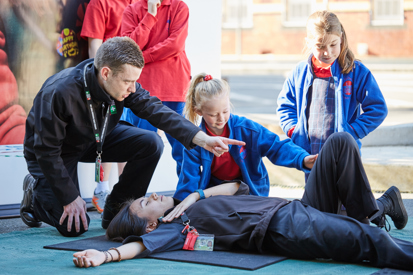
First Aid in Schools Program
This free Program teaches primary school students on the importance of First Aid and what to do in an event of an emergency.
PROGRAM BOOKINGS
All bookings are subject to staffing availability.


About the Schools Program
So far, we have taught more than 1.2 million children since the program started in 2013.
The knowledge and skills gained in our First Aid in Schools Program will develop First Aid awareness in school children and contribute to building a more resilient community. This learning is age-appropriate and integrates with the Victoria Curriculum F-10.
Bringing to life the importance of First Aid and what to do in an emergency, including calling 000 and performing CPR, is our passion. The interactive games, Storytime and Action Plan scenarios make the program more enjoyable than ever before, with an average teacher rating of 9.53 out of 10.
We are very excited to be able to visit you for face to face training once again, but remember you must book in a minimum of 90 students on any given day. (Rural schools please contact the Community Co-ordinator)

The Kindergarten program is limited availability. If you are a Kindergarten or Early Learning Centre interested in the program, complete an Expression of Interest (EOI) here to go on the waitlist.
CLICK ON THE RELEVANT YEAR LEVEL TO READ MORE ABOUT THE MODULE OPTIONS AND TOPICS AVAILABLE.
Note all students should complete a standard module in a prior year before completing an alternate module, as this prior knowledge is assumed. Modules can be alternated year to year, for example Storytime in Prep, then Bones, Bumps and Bandages in Grade 1.
Standard Module: Storytime
Through a storybook, the children will see how Johnny Bear identifies an emergency, puts the Danger, Response and Send for help strategy into action and helps call 000 in an informative session. Students will learn the first aid chant that will help them remember what to do in an emergency. Includes a fun quiz on first aid to get students up and involved.
Alternate Module (Grade 1 Only): Bones, bumps and bandages
45 MINS
This program is designed to build students' confidence in identifying urgent and emergency situations. They'll get to know different first aid equipment and learn how to help someone with a cut, broken bone, or head injury. Additionally, they'll review the first three steps of the DRSABCD action plan and practice applying it to these scenarios. They also get to participate in fun and hands-on activities such as bandaging each other and roleplay.
Standard Module: Danger, Response, Send
45 MINSStudents learn how to spot DANGER in an emergency, RESPOND accordingly and SEND for help. They will be guided on what number to call and act out a scenario to get them comfortable calling 000 in real life. Students will play a fun and interactive game as teams compete in the first aid quiz. By the end of the program, students will leave with essential skills and knowledge which they can call upon in an emergency situation.
Standard Module: Airway & Breathing
45 MINSFollowing on from the Prep – Grade 2 modules, students will revise ‘DRS’ which involves assessing for dangers, obtaining a response and calling Triple Zero. The main focus of this module will be demonstrating how to check airway and breathing and how to place a patient into the recovery position. Students will then apply the knowledge they have learnt through an interactive game based on the DRSAB action plan.
Alternate Module 1: Snake Bites
45 MINS
In this program, students will learn about how to stay safe in areas where snakes may live and understand what steps to take if someone is bitten. They will revisit the DRSABCD action plan and learn how to apply it for someone who has been bitten by a snake. Students will also have the opportunity to practice applying a snake bite bandage.
Alternate Module 2: Anaphylaxis
45 MINS
In this program, students will learn the difference between a mild/moderate allergic reaction and a severe, life-threatening anaphylactic reaction. They will explore common allergens and the foods they can be found in. Students will also learn the importance of getting help quickly, and become familiar with adrenaline auto-injectors (AAIs), including what they look like and why they are important. They will revisit the DRSABCD action plan and learn how to apply it when responding to an anaphylaxis emergency.
Standard Module: CPR
45 MINSReiterates the learning of standard modules 1 & 2, however incorporates a practical CPR component, guiding students through how to perform CPR and when it is required in a First Aid situation. Students will also participate in group problem-solving scenarios based on a variety of first aid situations allowing them to apply their knowledge.
Alternate Module 1: Snake Bites
45 MINS
In this program, students will learn about how to stay safe in areas where snakes may live and understand what steps to take if someone is bitten. They will revisit the DRSABCD action plan and learn how to apply it for someone who has been bitten by a snake. Students will also have the opportunity to practice applying a snake bite bandage.
Alternate Module 2: Anaphylaxis
45 MINS
In this program, students will learn the difference between a mild/moderate allergic reaction and a severe, life-threatening anaphylactic reaction. They will explore common allergens and the foods they can be found in. Students will also learn the importance of getting help quickly, and become familiar with adrenaline auto-injectors (AAIs), including what they look like and why they are important. They will revisit the DRSABCD action plan and learn how to apply it when responding to an anaphylaxis emergency.
Alternate Module 3: Asthma
45 MINS
This program introduces students to the basics of asthma management. Students will learn how to recognise the signs and symptoms of asthma, understand the purpose of reliever medications, and explore the first aid management of severe asthma. They will revisit the DRSABCD action plan and learn how to apply it when responding to an asthma emergency.


